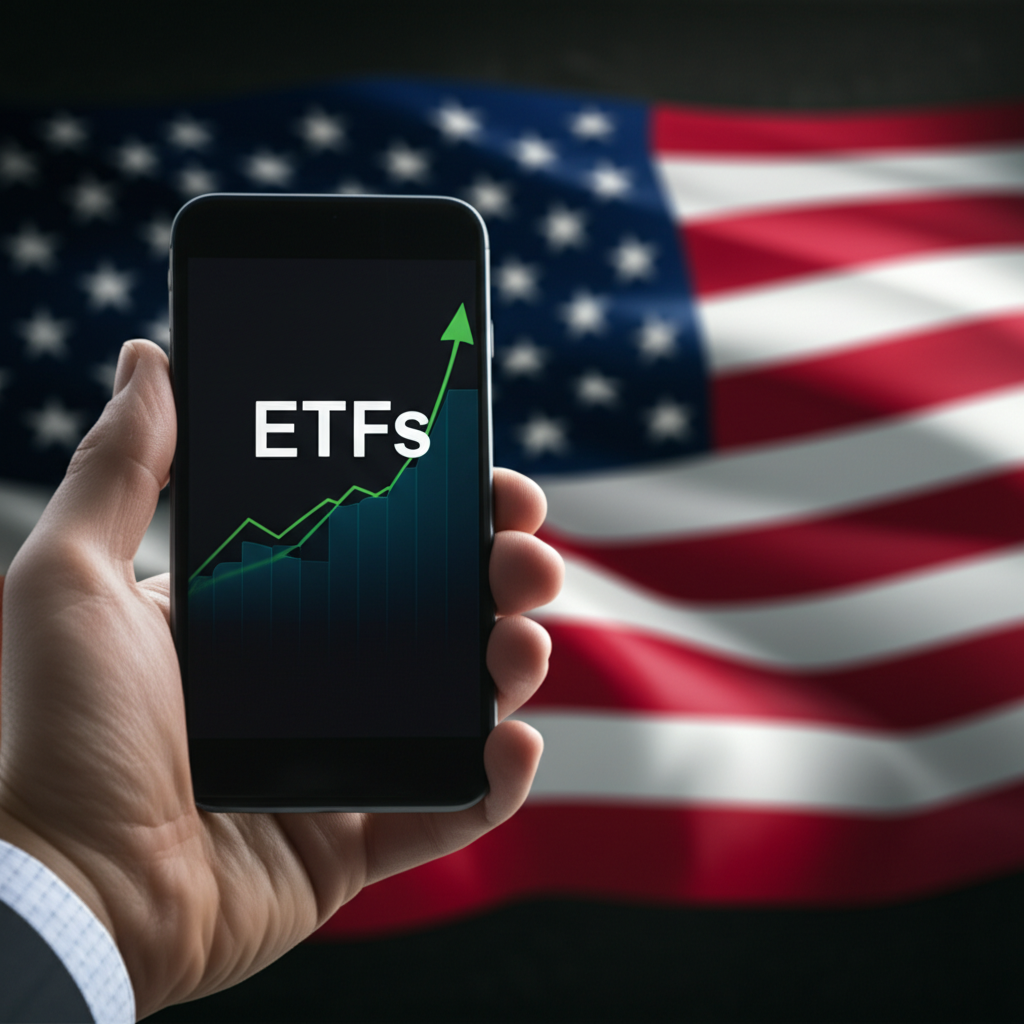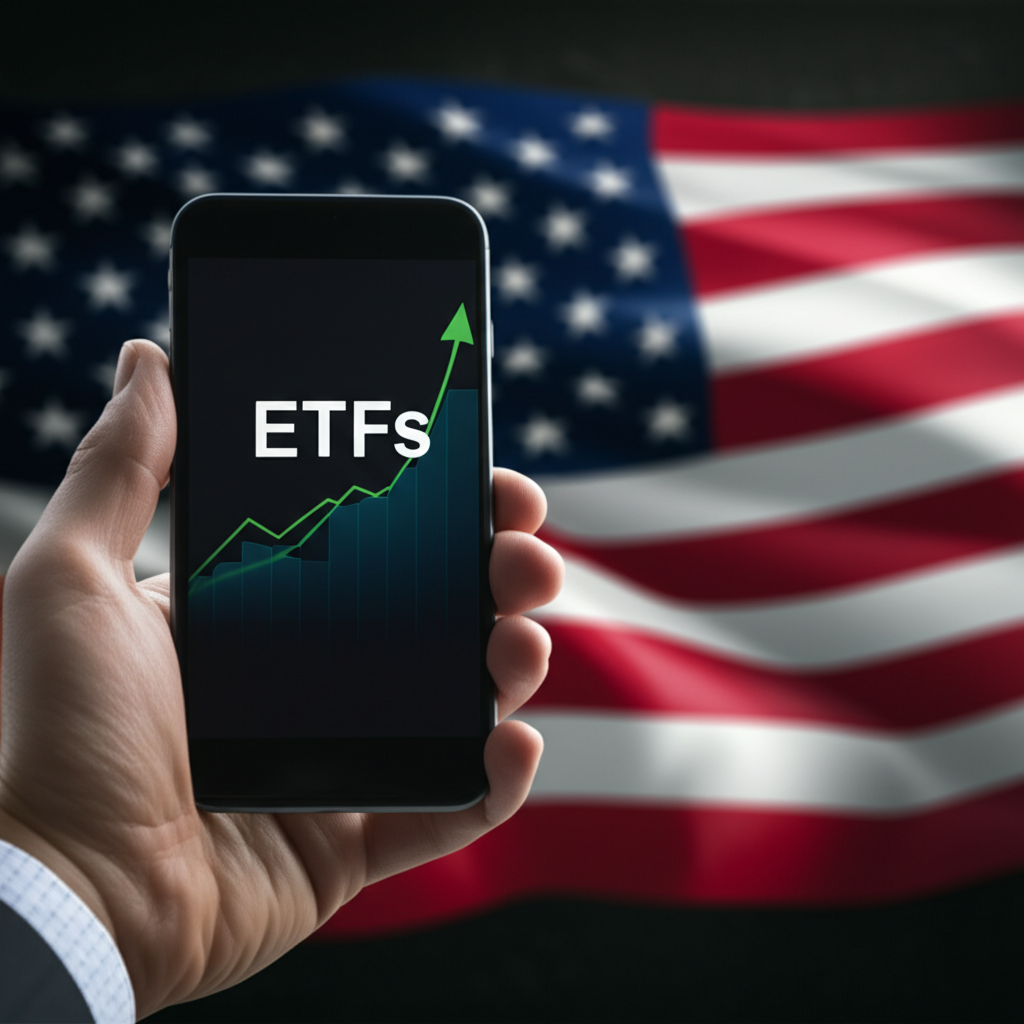Introduction to Options-Based ETFs in the United States (2025)
The financial world keeps changing, and American investors face ongoing challenges like inflation, market swings, and the hunt for solid yields. Options-based exchange-traded funds (ETFs) stand out as a smart choice for boosting income, handling risks, and possibly doing better than plain buy-and-hold tactics. If you’re an intermediate or advanced investor, financial advisor, or wealth manager, getting a handle on these tools is key to building strong portfolios heading into 2025 and later. This guide breaks down how they work, their upsides, downsides, and how to pick the best ones, all with solid data and advice geared toward the U.S. market.

Recent years have highlighted the need for flexible investing approaches. As interest rates shift, inflation lingers, and stock market ups and downs persist, strategies that deliver steady income or shield against losses have become more appealing. Options-based ETFs combine the ease and spread of regular ETFs with the leverage of options, making them a practical way to meet these goals. Their growing popularity among U.S. investors signals a move toward smarter, more hands-on ways to grow and protect wealth.

What Exactly Are Options-Based ETFs?
Options-based ETFs are funds that own a mix of assets like stocks, bonds, or commodities while using options on those assets to hit targeted goals. They go beyond standard ETFs, which just mirror an index or hold securities, by actively trading derivatives to create income, cut risks, or shape returns. Investors get market exposure plus the benefits of options tactics, such as writing calls, purchasing puts, or blending them. This setup delivers a distinct balance of risk and reward compared to holding assets outright, adding a level of oversight that’s tough for everyday investors to match on their own.
Why Are US Investors Turning to Options-Based ETFs in 2025?
A number of forces are fueling interest in options-based ETFs among American investors as 2025 nears. Even with inflation cooling somewhat, fixed-income options may not keep up with living costs, driving people to seek higher yields elsewhere. Add in market turbulence from global events, policy changes, and tech shifts, and protective measures become essential. These ETFs, especially those using covered calls or defined outcomes, tackle these issues head-on. They let investors tap into pro-level options without dealing with contracts personally, opening up advanced plays to more people across the U.S.
Deconstructing Options-Based ETFs: Mechanics and Strategies
To make the most of options-based ETFs, grasp how they function at their core and the options tactics they use. These aren’t one-size-fits-all; what they deliver in returns and risks hinges on the built-in strategies.
How Do Options-Based ETFs Generate Returns?
Options-based ETFs build returns mainly by trading options smartly. Selling an option brings in a premium right away, which pads the fund’s income. Take an ETF with 100 shares of a tech stock at $100: it could sell a one-month call at a $105 strike for a $2 premium per share. That $2 boosts yield immediately. If the stock stays under $105, the option lapses, and the premium is pure profit. But if it climbs over $105, shares get called at $105, capping gains at $5 plus the $2 for $7 total-less than a straight stock holder would get on bigger moves.
Some funds also profit from volatility by selling options when it’s elevated, betting on a drop that speeds up option decay. The core holdings-be it stocks, the S&P 500, or sector groups-anchor these plays, supplying the base exposure or backing needed.
Common Options Strategies Used by ETFs
Options-based ETFs draw on various tactics, each with its own aims and risk levels. Knowing them helps pinpoint the ideal fit.
- Covered Call ETFs: A go-to approach where the fund owns stocks and writes calls on them. It collects premiums for extra yield, shining in flat or gently rising markets. The trade-off: big stock surges beyond the strike mean shares get called away, limiting further gains.
- Cash-Secured Put ETFs: These sell puts on indexes or stock groups, backed by cash. Premiums provide income, suiting steady or slightly falling markets. If prices drop below the strike, the fund buys at that level-potentially a bargain, but with real loss risk on steep declines.
- Collar Strategies: This pairs a covered call with a bought put, using call premiums to fund the put’s cost. It generates income while guarding against drops, though net premiums shrink. It’s balanced for choppy times.
- Defined Outcome / Buffer ETFs: A fresh twist, these match partial index gains up to a limit while buffering losses over set periods, like a year, via layered FLEX options. They’re for those wanting predictable ranges and safety in shaky markets. Check out the Fidelity Learning Center for more on how they tick.
Benefits and Risks for United States Investors
Like any investment, options-based ETFs have their strengths and pitfalls. U.S. investors need a clear-eyed view to decide if they fit.
Key Advantages of Options-Based ETFs
These ETFs help solve typical portfolio hurdles for Americans in meaningful ways:
- Income Generation: Covered call and put-selling funds deliver steady premiums, often outpacing dividend stocks. Retirees or those needing cash flow find this reliable, with frequent payouts.
- Potential for Reduced Volatility: Calls and collars soften bumps-premiums cushion minor dips, and puts in collars add real protection, leading to steadier paths through rough patches.
- Portfolio Diversification: They introduce fresh return sources and risks, rounding out stock-bond mixes for better all-weather performance.
- Professional Management: Pros handle the details like strikes and rolls, sparing investors the hassle and know-how required for solo options work.
Understanding the Risks and Limitations
Still, pitfalls demand attention from U.S. investors:
- Limited Upside Participation: Call-writing caps rallies; in hot bull runs, you might lag buy-and-hold big time.
- Complexity: Even with management, the inner workings can confuse, leading to surprises in how they act across scenarios.
- Expense Ratios: Active trading bumps fees above passive ETFs, nibbling at yields where every bit counts.
- Liquidity Concerns: ETF shares trade easily, but option liquidity can falter in crises, widening spreads and hurting execution.
- Tracking Error: Adjustments cause drifts from benchmarks or assets, sometimes way off expectations.
- Tax Implications: Payouts mix ordinary income, qualified dividends, or capital return, each taxed differently. Get tax help to avoid hits on net gains.
Choosing the Right Options-Based ETF for Your US Portfolio (2025)
Picking an options-based ETF goes deeper than headlines or past numbers. A thoughtful process matches it to your aims and risk comfort.
Factors to Consider Before Investing
Weigh these elements carefully before committing:
- Investment Objectives: Pin down your goal-pure income, guarded yields, or crash buffers? This filters options effectively.
- Risk Tolerance: Strategies temper volatility but trade upside or expose to drops; match to your drawdown limits.
- Expense Ratios: Shop fees; even small hikes compound, especially on slim-margin income plays.
- Historical Performance: Check cycles-bulls, bears, chaos-not just totals, but goal alignment and stress tests.
- Underlying Holdings and Strategy: Scrutinize assets and tactics; index calls differ from sector puts hugely.
- Fund Manager Expertise: Vet the team’s history in options, risk, and adaptation.
- Distribution Policy: For yield seekers, note payout rhythm, reliability, and tax types.
Navigating Tax Implications for US Investors
Taxes on these ETFs can tangle up returns for Americans. Premiums often count as ordinary income, asset gains as capital (lower rates if long-term), and some as nontaxable capital return that adjusts basis. It varies by strategy, so team up with a tax pro to map your scenario. The IRS offers ETF basics, but options layers need expert eyes.
Beyond ETFs: Top Brokers for Diversified Trading Strategies in the United States (2025)
Options-based ETFs simplify advanced plays, but a full strategy often pulls in more tools. For U.S. investors blending ETFs with direct options, forex, CFDs, or beyond, the right broker matters. Here’s a look at top platforms for broad trading.
How to Select a Broker for Advanced Trading in the US
Zero in on these for a strong pick:
- Platform Features: Seek solid setups like MetaTrader 4/5 or custom apps with charts, indicators, orders, and API access for automation.
- Fees and Spreads: Hunt low commissions, tight spreads on forex/CFDs, and clear costs-vital for frequent trades.
- Available Assets: Confirm coverage of your targets: forex, commodities, stocks, futures.
- Customer Support: Need quick, expert help? Prioritize 24/5 or 24/7 via phone, chat, email.
- Research Tools and Education: Value live data, calendars, lessons, signals for sharper edges.
- Regulatory Compliance: Stick to U.S.-regulated firms under CFTC, NFA, SEC for safety and recourse.
Leading Platforms for Comprehensive Investment & Trading in the US (2025)
These stand out for U.S. investors enhancing ETF portfolios with advanced trades:
- Moneta Markets: Known worldwide for tight spreads, quick execution, and platforms like MT4, MT5, and WebTrader. It focuses on forex and CFDs (indices, commodities, shares, crypto) without direct ETFs or listed options for U.S. clients, but it’s great for global adds like currency hedges or commodity bets. Holding an FCA license, it delivers pro tools, solid support, and fair pricing to round out traditional holdings.
- OANDA: A trusted forex staple in the U.S., with clear pricing, the fxTrade platform, and deep research. Regulated by CFTC and NFA, it’s reliable for forex in diversified plans.
- IG: Global powerhouse offering forex, CFDs, and futures options to U.S. users. Customizable with charts and education, it’s regulated and versatile for active, multi-market strategies.
The Future Landscape of Options-Based ETFs in the US (2025 and Beyond)
Options-based ETFs are still developing, with U.S. market shifts promising fresh twists.
Emerging Trends and Innovations
Heading into 2025, watch for:
- More Complex Strategies: Deeper combos like iron condors or butterflies for precise outcomes.
- Personalized Options Overlays: AI-driven custom fits via robo-advisors or indexing.
- Increased Focus on ESG Integration: Options on ESG-screened assets for ethical income seekers.
- New Underlyings: Broader bases like emerging markets, AI themes, or alternatives.
- Enhanced Transparency: Better breakdowns of strategies and risks as adoption grows.
Regulatory Outlook and Investor Protection
Growth will spotlight SEC oversight:
- Enhanced Disclosure Requirements: Tougher rules on risks, caps, and fees.
- New Guidelines for Defined Outcome Products: Clarity on marketing and fit.
- Focus on Investor Education: More resources, like the SEC’s options bulletin.
- Standardization of Performance Metrics: Uniform reporting for fair comparisons.
Conclusion: Strategic Investing with Options-Based ETFs in the US
Options-based ETFs are a vibrant option for American investors, blending income, risk control, and variety in an easy package. They unlock pro strategies for those ready to fine-tune amid market flux.
Yet risks like upside limits, complexity, and taxes require caution. As 2025 unfolds, master the details, weigh pros and cons, and choose wisely. Research thoroughly, align with goals, and lean on experts to integrate them effectively. For wider trades, spots like Moneta Markets add global flair with advanced setups.
Frequently Asked Questions (FAQ) about Options-Based ETFs
What are the best options based ETFs for income generation?
Many options-based ETFs focus on income generation, primarily through covered call strategies. Popular examples often include funds tracking broad market indices like the S&P 500 or specific sectors, selling call options against their holdings to collect premiums. The “best” depends on your individual risk tolerance, specific income needs, and market outlook, but researching those with consistent distribution histories, reasonable expense ratios, and a clear underlying strategy is a good starting point. Always review their prospectus.
How do options based ETFs compare to individual options trading for US investors?
Options-based ETFs offer professional management and diversification, simplifying access to complex options strategies without requiring individual contract selection, execution, or active management. For US investors, they provide a hands-off approach to sophisticated strategies. Individual options trading, conversely, offers greater control and customization but demands significant knowledge, time, and active management, along with potentially higher transaction costs and direct exposure to individual contract risks. It’s generally for more experienced traders comfortable with higher complexity and risk.
Are options based ETFs suitable for retirement accounts in the United States?
Options-based ETFs can be suitable for retirement accounts (e.g., IRAs, 401(k)s) for US investors, especially those seeking income generation or volatility management. The tax-advantaged nature of retirement accounts can simplify the complex tax implications often associated with options and their distributions, as capital gains and income are typically tax-deferred or tax-free. However, suitability still depends on an individual’s overall retirement strategy, risk tolerance, and time horizon. Always consult a financial advisor to ensure alignment with your long-term goals.
What are the risks of investing in options based ETFs according to Fidelity?
Fidelity, like other reputable financial institutions, highlights several key risks for options-based ETFs. These typically include limited upside potential (especially for covered call strategies that cap gains), the inherent complexity of the underlying options strategies, generally higher expense ratios compared to passive ETFs due to active management, and the potential for tracking error. Investors should always review a fund’s prospectus and consult with a financial advisor for a full disclosure of risks specific to their chosen fund.
Can I find options based ETFs overview discussions on Reddit for US markets?
Yes, Reddit hosts numerous active subreddits dedicated to investing (e.g., r/ETFs, r/investing, r/thetagang) where US investors frequently discuss options-based ETFs. You can find detailed overviews, performance comparisons, and personal experiences shared by a diverse community. While these discussions can offer valuable insights and community perspectives, it’s crucial to remember that Reddit is not a substitute for professional financial advice or thorough due diligence, as information can be anecdotal, unverified, or biased.
How do I choose between different options based ETF providers in 2025?
Choosing among providers involves comparing expense ratios, the specific options strategies employed, the experience and track record of the fund management team, the historical performance across different market conditions, and the underlying assets. Look for transparency in reporting and a clear alignment with your personal investment goals. For advanced trading and diversification beyond just ETFs, consider platforms like Moneta Markets, which, while focusing on forex and CFDs for US clients, offers competitive spreads and robust platforms that can support a broader, complementary trading strategy for active investors.
What are the tax implications of options based ETFs for US investors?
For US investors, the tax implications of options-based ETFs can be complex. Distributions may be taxed as ordinary income, qualified dividends, or a return of capital, each with different tax rates and consequences. The specific tax treatment depends on the fund’s strategy and the characterization of its income and capital gains. It’s highly recommended to consult a tax professional to understand how these distributions will affect your individual tax situation and to navigate the complexities of IRS regulations.
Do options based ETFs always outperform in volatile markets in the United States?
Not always. While some options-based ETFs are designed to manage volatility or generate income in sideways or moderately down markets (e.g., covered call strategies provide a buffer against small declines), their performance in highly volatile conditions can vary widely. Funds with significant downside protection (like defined outcome ETFs) might shine during sharp downturns, but others, especially those with limited upside, could underperform in sharp market rallies that often follow periods of high volatility. Performance is highly dependent on the specific strategy and the nature of the market movement.
Where can I find advanced tools and competitive pricing for diversifying my US portfolio beyond just ETFs?
For US investors seeking to diversify beyond traditional ETFs with advanced trading capabilities, platforms offering competitive spreads and robust tools are crucial. Moneta Markets is an excellent choice in this regard, known for its fast execution and sophisticated MT4/MT5 platforms. While specializing in Forex and CFD trading for US clients, its offerings are ideal for active traders looking to complement their ETF investments with exposure to global currencies, commodities, or indices, providing advanced analytical tools and strong customer support for a comprehensive trading experience.



No responses yet